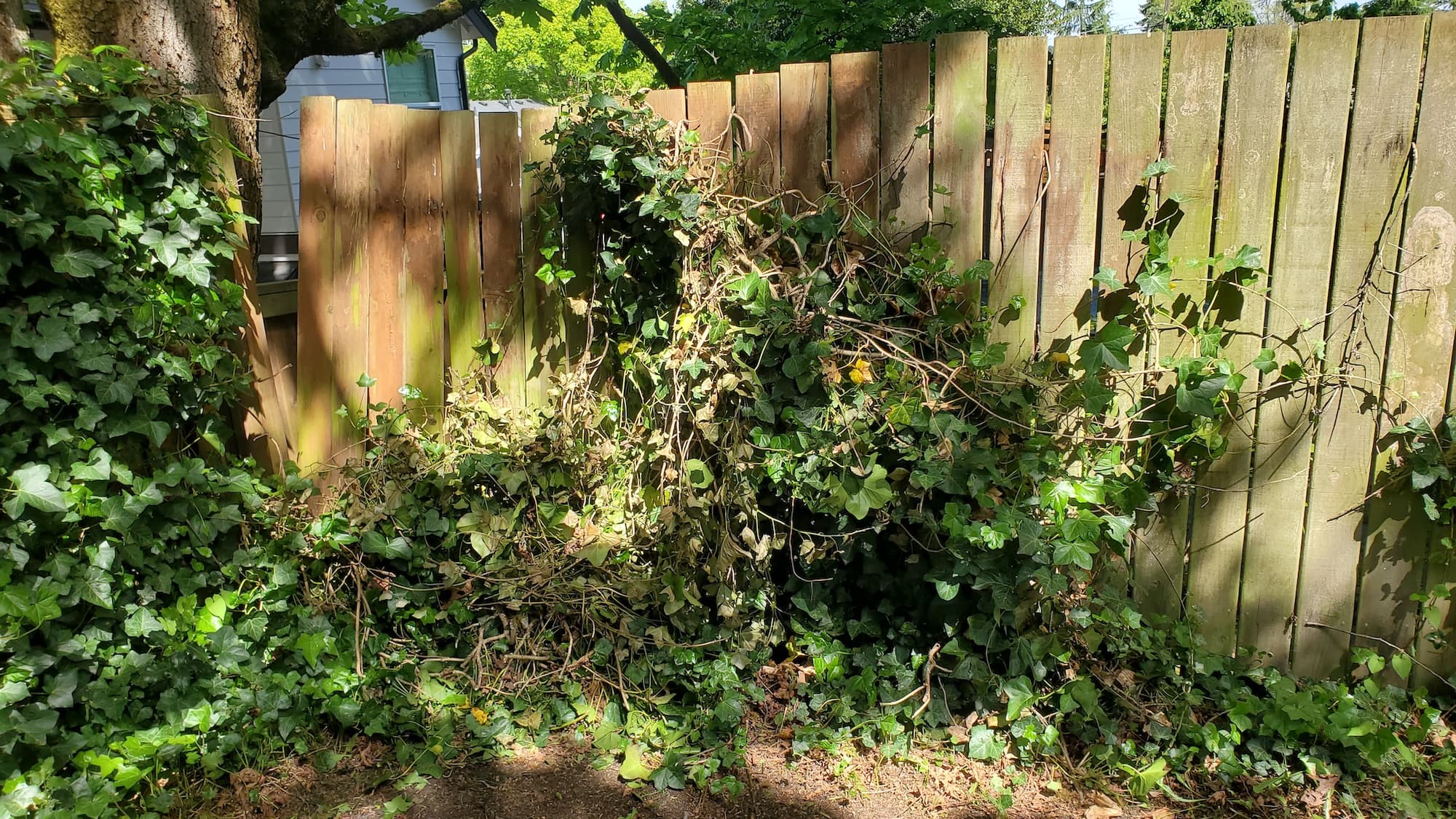West Seattle Pull vines off chain-link fences
Homeowner’s Issue
West Seattle yards get heavy, year-round moisture and long, shady runs under maples and evergreens. That climate favors clinging vines — English ivy, Himalayan blackberry runners, clematis tangles, and volunteer morning glory — which grab chain‑link and quickly turn fencing into a structural and visual problem. Many houses near Alki, Lincoln Park, Admiral and the Junction sit on slopes or narrow setbacks; vines pull on the mesh, trap debris, encourage rust, and hide drainage problems where gutters or downspouts dump on the fence line.
Soil here is often compacted loam with pockets of glacial clay; when wet it holds vines’ roots close to the surface and makes regrowth likely. Heavy autumn and winter rains can push roots deeper and wash seed down into fence-line beds, while summer droughts make manual removal easier but increase stress on nearby plants. Homeowners face HOA rules about tidy boundaries and neighbors who notice runners jumping property lines. The goal isn’t just aesthetics: it’s stopping vines from undermining fence posts, reducing places for rodents, and preventing invasive species from re-seeding into native plantings. We use only manual, sustainable methods — no herbicides — and focus on long-term suppression so you’re not fighting the same tangle next season.
Our Quality Service
We remove vines by hand with care and local know-how. We start with a site assessment, cut and peel vines from the fence, then get roots and runners out of the soil where practical. Tools include loppers, hand saws, root hooks, and wire brushes; we use compostable bags and green‑waste bins for disposal. For steep lots and narrow alley access in West Seattle, we plan logistics ahead so work is safe and tidy.
Typical timelines: small sections (10–20 ft) take 1–2 hours; a full yard or multi-fence perimeter is half‑day to a full day. Follow-up visits 4–8 weeks later catch regrowth. We prioritize erosion control on slopes and respect summer watering restrictions — all work is timed to minimize runoff and soil disturbance. Benefits: safer fence lines, restored curb appeal, lower maintenance demands, and a durable fix that keeps vines from coming back.
What’s Included
- Visual assessment of vine type and root structure.
- Manual cutting and pulling of vines from chain‑link.
- Root and runner removal where feasible (to reduce resprouts).
- Cleanup of vegetative debris and broom/sweep of the immediate area.
- Green‑waste haul‑away or staged curbside green‑bin prep.
Options / upgrades:
- Mulch + landscape fabric along fence line for suppression.
- Organic root barrier and thick mulch to limit resprouting.
- Planting low‑maintenance native shrubs as a living screen.
- Gravel or drain rock strip to improve drainage and reduce soil contact with fence.
- Revisit service (4–8 weeks) to remove returned shoots (recommended).
Before & After / Expectations
Expect some noise and a day of hauling green waste for larger jobs. We’ll need unobstructed gates and short access paths; if the site has tight alley access or steep slopes we’ll confirm staging before arrival. After removal the fence will look raw for a few days while tender shoots dry; clean lines typically show immediate curb‑appeal gains.
Care tips for West Seattle:
- Best removal window: late spring to early fall when beds are drier and easier to dig. Avoid heavy winter storms.
- Watch for regrowth in spring and late summer; spot‑pull early before vines set seed.
- Moss and ivy thrive in shady, damp spots — improve drainage and thin tree canopy where possible to reduce shade.
- Water new plantings sparingly during summer restrictions; aim for deep, infrequent watering if you replace vines.
FAQs
Q: Do you use herbicides?
A: No. We use manual, mechanical, and organic methods only — no chemical herbicides.
Q: How long before vines stop coming back?
A: If roots and runners are removed and mulch or fabric installed, regrowth drops significantly. Expect follow‑up in 4–8 weeks and a maintenance check in the first year.
Q: Do you haul debris?
A: Yes. We offer green‑waste haul‑away or will stage materials for Seattle curbside green bins on request.
Q: Will this damage the fence?
A: We remove vines carefully to avoid pulling chain‑link off posts. If the fence is already compromised, we’ll flag repairs but won’t invent fixes you don’t need.
Call to Action
If you’re in West Seattle and ready to clear the fence line—Alki shorelines, Admiral slopes, or Fauntleroy yards—we’ll give a straightforward estimate and schedule quickly. We focus on sustainable, long‑term results without herbicides.
Email neatandtidyseattle@gmail.com or call 206-538-9344 to book a free estimate and fast scheduling. Mon–Sun: 9am–6pm.










